The bus staff didn’t let me board because I hadn’t printed my ticket. They left Kyle and me stranded at the Dubrovnik bus station! Thankfully, I managed to buy a new ticket from the station’s ticket booth, so we’re still heading to Mostar, Bosnia-Herzegovina. This experience with getbybus.com made me so frustrated that I vowed never to buy a ticket from them again. From now on, I’ll only use goeuro.com.
That’s why, when I decided to visit Ljubljana, Slovenia after my trip to Mostar, I didn’t want to buy anything from that Balkan bus website. After a bit of research, I found a route to reach Ljubljana by buying tickets on-site: Mostar – Zagreb and Zagreb – Ljubljana. Luckily, the Balkan region isn’t so advanced yet, so buying tickets on-site is still an option. I bought my ticket to Zagreb at a travel agent’s office at Mostar bus terminal a day before departure for €13. Then I bought the ticket from Zagreb to Ljubljana right at the Zagreb bus terminal just a few hours before departure for only €9. Although FlixBus tickets could be purchased via their app for the Zagreb-Ljubljana route, I opted to buy them at the ticket booth with cash.
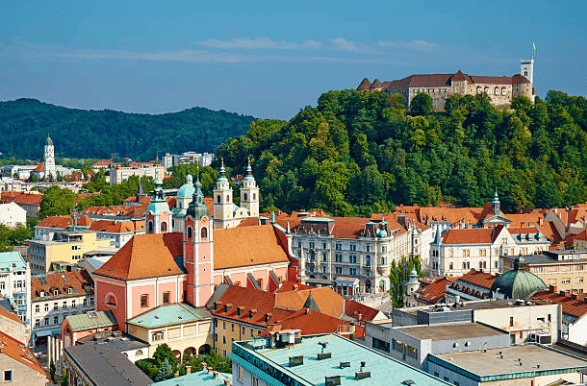
After a total of 10 hours and 45 minutes of travel and a 2-hour layover in Zagreb, I finally reached my last Balkan destination, Slovenia!
When people think of Slovenia, they often mention Lake Bled—a beautiful lake with a quaint church on a tiny island that’s a 1.5-hour drive from the capital, Ljubljana. But after some research, I realized Ljubljana itself is also worth exploring. Slovenia’s largest city boasts a charming pink church, Dragon Bridge, and several other unique bridges. It even outranked the Scandinavian countries to earn the title of 2016 European Green Capital. I ended up spending five days in Ljubljana, including a day trip to Bled.
Exploring Ljubljana: History of Slovenia and Ljubljana
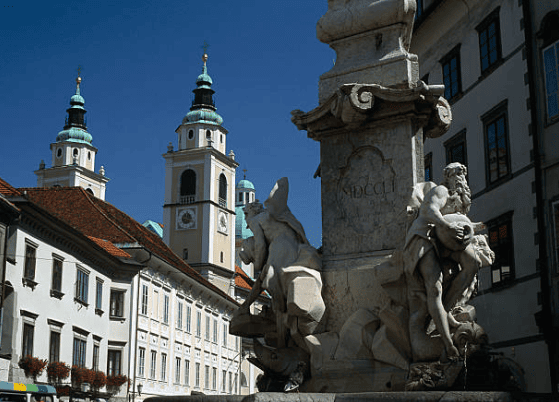
Not sure where Slovenia is? This Central European country borders Italy and Austria. Among the former Yugoslav countries, Slovenia is the most developed and saw the least conflict. I was also relieved to find they use the Euro here, so no need to hunt for money changers. FlixBus operates in Ljubljana too, so I could easily buy tickets for my next destination using the app or Omio (formerly goeuro). Public transport and facilities here meet European standards, so there was none of the tension I felt when traveling through Macedonia or Bosnia.
Slovenia was part of the Habsburg Empire from the 13th century, then part of the Austrian Empire until after World War I, when Austria-Hungary dissolved. Like Bosnia, Slovenia became part of the Kingdom of Serbs, Croats, and Slovenes. In WWII, Ljubljana was occupied by Italy and Germany. After the war, Slovenia became the Socialist Republic of Slovenia, part of the Socialist Federal Republic of Yugoslavia. When Yugoslavia dissolved, Slovenia declared independence in 1991 and officially joined the European Union in 2004. Indonesian citizens need only a valid Schengen visa to visit Slovenia.
Exploring Ljubljana: Things to See and Do
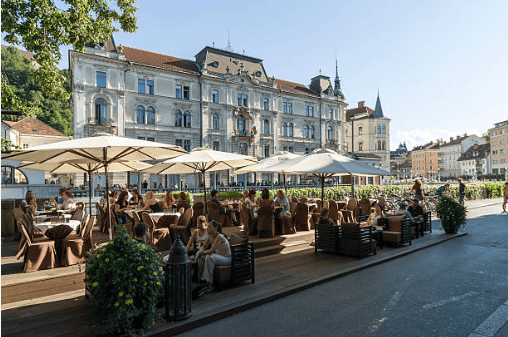
Why did I stay in Ljubljana for five days? Mainly to relax after hopping between cities and countries, especially after my trip to Croatia. We wanted to unwind in a different country. Kyle was also impressed with Ljubljana after reading blogs and watching a video by an American who had lived there.
Two names are synonymous with Ljubljana: dragons and Jože Plečnik. Plečnik, a Slovenian architect, designed many of the city’s bridges and buildings. Exploring Ljubljana, you’ll encounter his work everywhere. The dragon is linked to the legend of a dragon that once attacked the city. This mythical creature has become a symbol of Ljubljana and even appears on the city’s flag and emblem.
Here are some spots worth visiting in Ljubljana:
1. Dragon Bridge
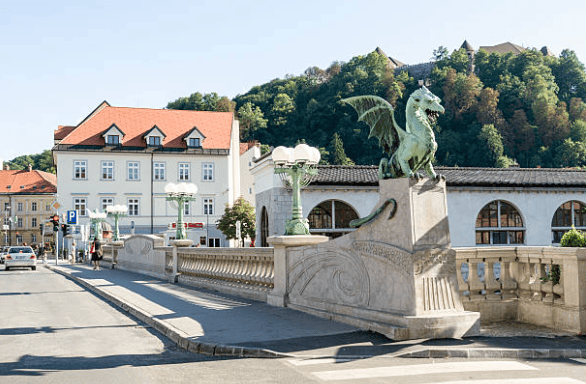
The first place I visited was the Dragon Bridge, in the heart of the Old Town. According to local myth, Jason and the Argonauts passed through Ljubljana on their journey to the Adriatic. He briefly stopped in Ljubljana and ended up battling and defeating the dragon. The bridge, adorned with dragon statues on each corner, was built to honor this legend. If you visit Ljubljana, take a photo in front of the bridge—I love the color of the dragon statues!
2. Old Town
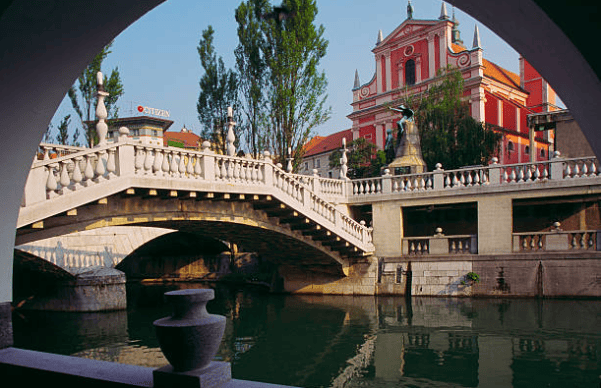
Ljubljana’s Old Town is another reason I enjoyed my time here. Unlike Dubrovnik, which was swarming with tourists even in the fall, Ljubljana felt less crowded and more relaxed. The Old Town, with Ljubljana Castle on the hill and the Ljubljanica River running through it, feels like a fairy tale. The area is lined with cafes, restaurants, and bars, making it a perfect spot for people-watching. The pedestrian-only streets are filled with Baroque, Art Deco, and Vienna Secession architecture. It’s common to see tourists and locals biking along the cobblestone paths.
3. The Triple Bridge
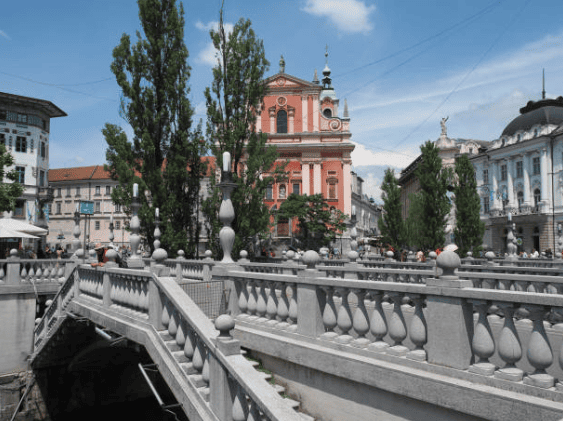
One of Ljubljana’s most unique icons, the Triple Bridge consists of three stone bridges side by side, designed by Plečnik to prevent congestion on the original single bridge. This bridge was the first landmark I visited.
4. The Pink Church
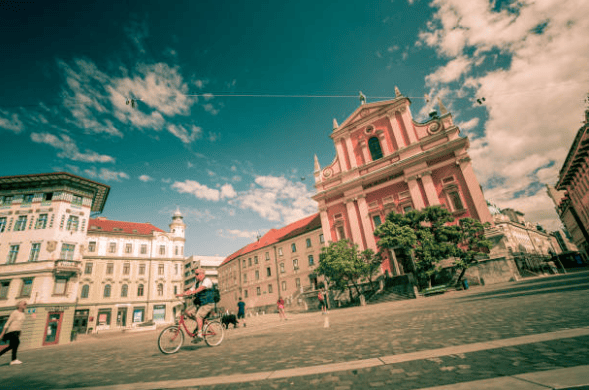
A pink church, the Franciscan Church of the Annunciation, stands out near Prešeren Square. Built between 1646 and 1660, it was originally red, but over time, the color has faded to a lovely salmon pink. Make sure to check its opening hours if you plan to visit.
5. Ljubljana Castle
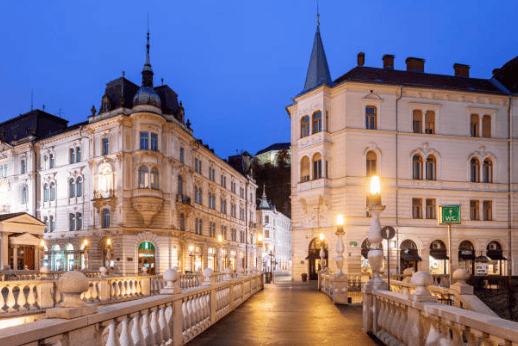
Situated atop Castle Hill, Ljubljana Castle offers hiking and sightseeing options. The viewing tower provides a stunning view of the Old Town and the city. You can reach the castle by walking or by funicular for €13 round-trip. The castle itself costs €10 to enter. Throughout the year, it hosts various social and cultural events as well as exhibitions.
6. Metelkova

Metelkova, Ljubljana’s autonomous cultural district, reminded me of the Christiania neighborhood in Copenhagen. This area was once Austro-Hungarian military barracks and later transformed into an alternative cultural hub where you’ll find art installations, graffiti, and vibrant nightlife. If you enjoy alternative culture and art, Metelkova is worth a visit. I stopped by on my last day in Ljubljana; it’s only a short walk from the Old Town.
After years of traveling, I now prefer “slow travel,” like I did in Ljubljana—taking my time to recharge and connect with the vibe of the place. Before moving on to Austria, I treated myself to a slice of sweet Ljubljana cake to wrap up my time in the city.

Thanks for sharing. I read many of your blog posts, cool, your blog is very good.